This is part 2 of the 5 part series known as "Orchid Show in Wichita." If you missed the first post, check it out
here. If you missed the third through fifth posts, you are incredibly punctual or you are reading this
in the future. (Hello, people of the future. Do we have flying cars yet?)
First, you might be wondering what Slippers and
Vandas have to do with one another.* Or maybe you're wondering what a Slipper is? Well, let me answer that question first. Slipper orchids are plants from the five genera
Cypripedium,
Mexipedium,
Paphiopedilum,
Phragmipedium and
Selenipedium. They are called "slipper" orchids because the lip of the flower forms a pouch that looks a bit like a woman could slip her toes inside. Many people see various "Paphs" or "Phrags" and think they look like they are carnivorous because of this pouch. The pouches do kind of trap insects, but only for the purpose of pollination, not for certain death and consumption.
Now, back to the reason that I clumped
Vandas** with Slippers... Well, these are two popular groups of orchids that I just don't grow. When I say popular, I mean
really popular. There are "Vanda People" and "Slipper People" that grow plants from one of these two groups exclusively. There are also people that grow a couple here and a couple there, but there are many people that like to specialize in one of these two alliances. I grouped them together because they are plants that I admire but don't have a great inclination to buy and grow (like I do so many other orchids).
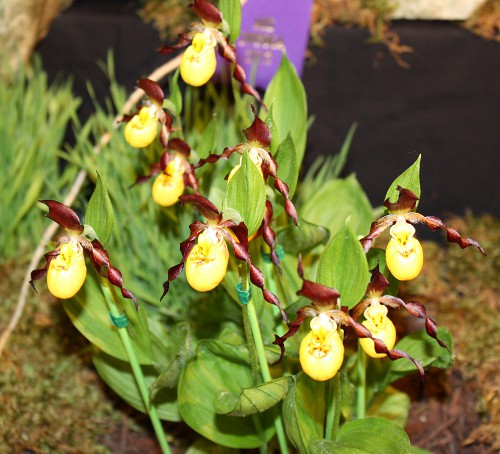 |
| Cypripedium parviflorum var. makasin |
The
Cypripediums pictured above were exceptionally healthy plants. Steve told me about how the owner of this plant grows it. He has a special setup where he grows the plants in plastic tubs that have a bit of water standing in the bottom. He allows them to overwinter in his garage while they are dormant and made it sound as though the care of these plants is quite easy with his setup.
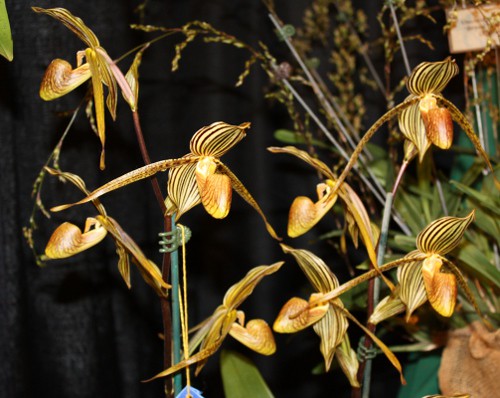 |
| Paphiopedilum Bel Royal (P. kolopakingii x. P. rothschildianum) |
The
Paphiopedilum pictured above is a primary hybrid. I really like the multiple blooming
Paphs and this striped hybrid is very nice.
 |
| Phragmipedium delesandroi |
Many of the slipper orchids are various shades of white, deep red, brown, pink and green. Then there are some exceptions, like the
Phrag above, which is bright orange and yellow. Normally I'm not a big fan of orange and yellow. Maybe I just like this one because orange and yellow are the oddball colors for these plants. I also like the simplicity of the shape of this orchid.
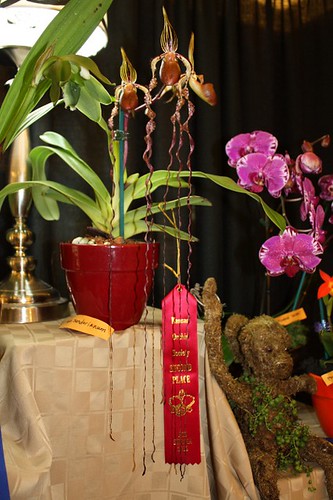 |
| Paphiopedilum sanderianum |
On the other end of the spectrum, you have to admire the complexity of the long petals that hang from this exceptional
Paphiopedilum sanderianum. Do you realize how long those are? I wish I had had a ruler with me to measure them for you all. They are easily 20 inches long. Leslie told me she heard that higher humidity in the growing environment encourages these extra long petals. You have to have these orchids in a special location so that the petals are not just laying in a coil on the bench where they are sitting. If I ever grow this plant, I will nickname it Rapunzel. I'm sure there is probably already a cultivar with this name.
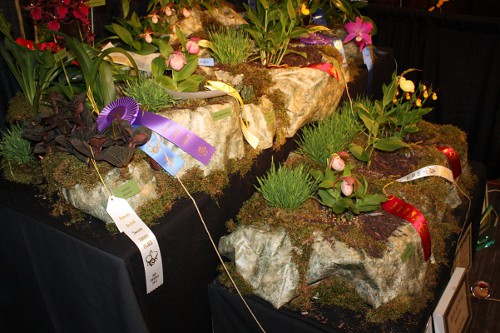 |
| Rock-like planters made with wallpaper |
The exhibit above was really pleasing to the eye, with the terrestrial orchids planted in their rock containers. Or wait, are those really rock? I was discussing the show with Steve when he exclaimed how cool these containers were and how real they looked. I was confused until he explained to me that they weren't really rock, but wallpaper. We walked over to the exhibit together and he showed me. Even when you
know that it is wallpaper, it is convincing. When you don't know to look for the imposter wallpaper, you have
no idea that it is not real.
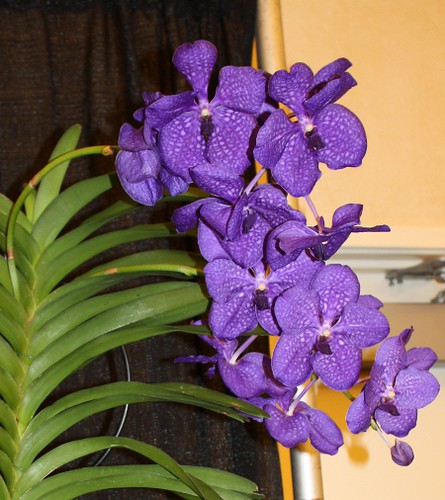 |
| Vanda Pachara Delight 'Sakate' |
Vandas are known for being vibrantly colored and having some colors that are not common among other orchids - especially purples and royal blues. The orchid above is a great example. The photo doesn't quite show the blue-ness of the flower as it appeared to the human eye. Even still, it is very nice.
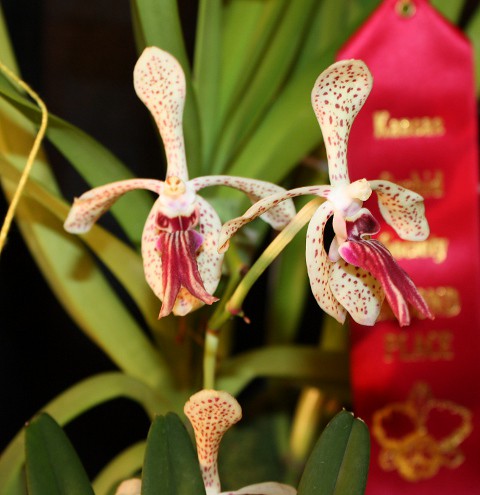 |
| Vanda Paki (V. suavis x V. cristata) |
There were some nice
Vandas that had spider-like flowers. I really like these two varieties (above and below) that were primarily white, with brown peppering and pink lips. These flowers are also neat because of the way the lower petals bend in towards each other.
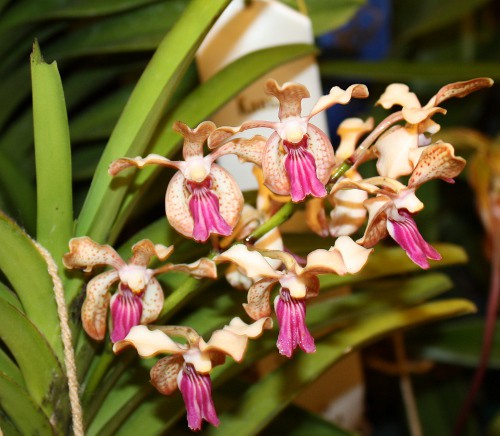 |
| Vanda Walnut Valley 'Mike' |
There were actually fewer
Vandas at this show than I have seen at some others. Maybe it was the time of year. I haven't had any luck with Vandaceous orchids, myself. I bought one in Florida last year that was determined to die, no matter how I took care of it. Like I said, it
is nice to have some orchids that you can just admire and not be tempted to own.
* From the botanical/taxonomical/anatomical/habitat-ual (I made up that last word) standpoint, these orchid groups are about as far away from one another as possible.
Vandas are tropical epiphytes, growing in hot and humid areas and not liking any growing media against their roots. Slippers are terrestrial, growing in the ground in a variety of locations, from the tropics to snow covered regions.
** While I'm at it, I should go ahead and mention that the Vanda Alliance includes several related genera, but this post only includes plants from the
Vanda genus.








No comments:
Post a Comment